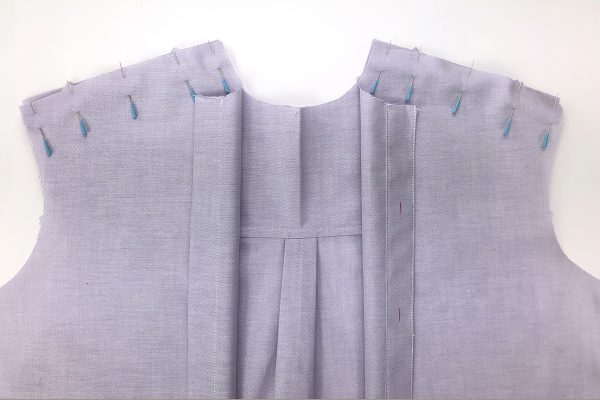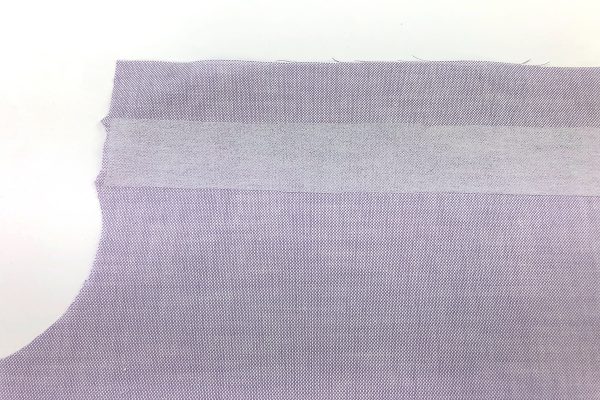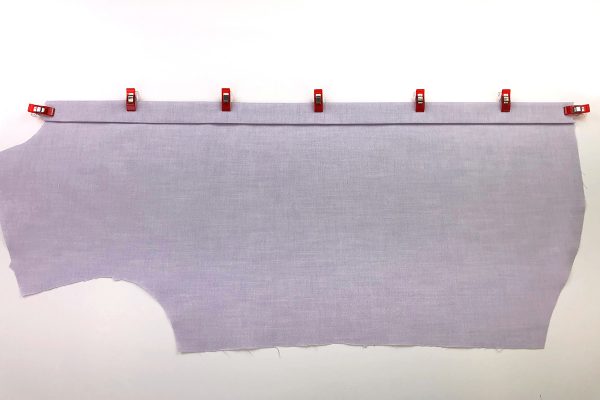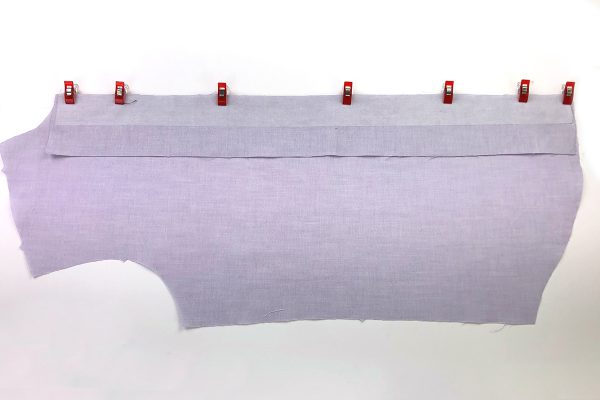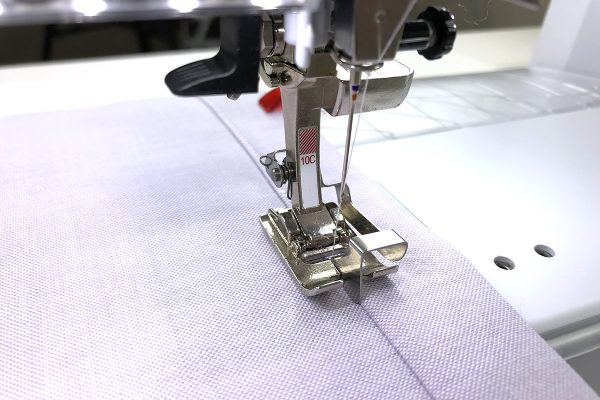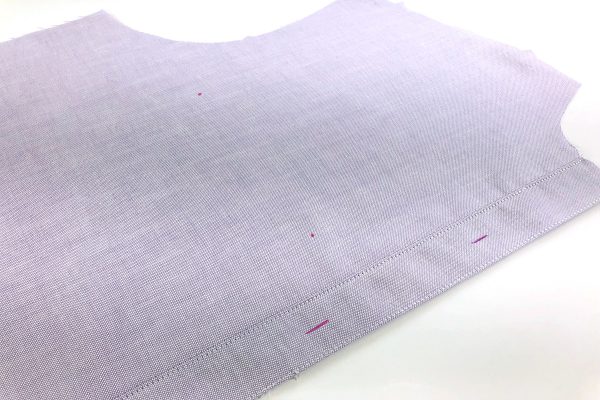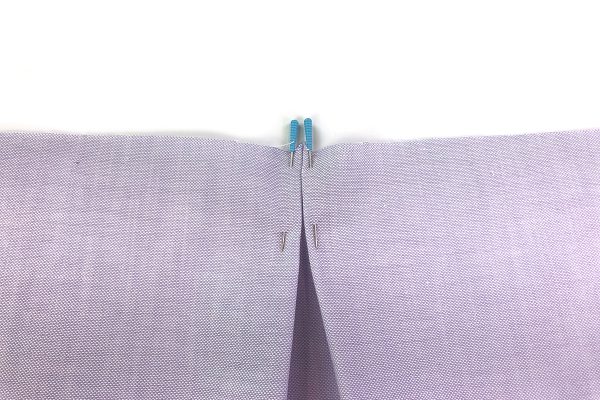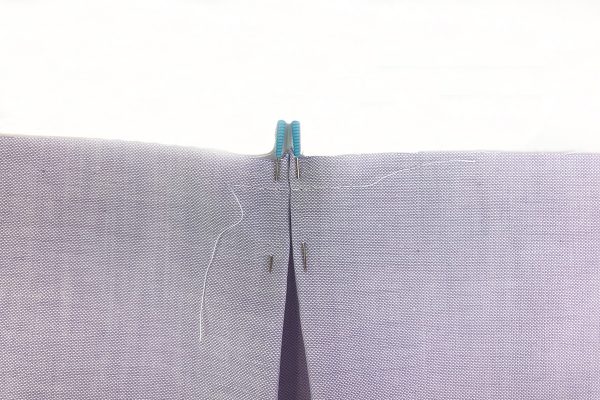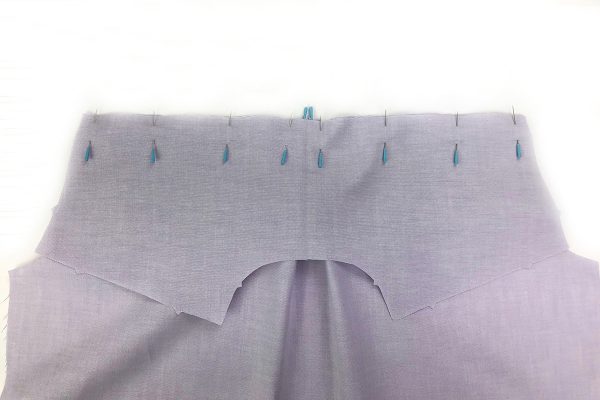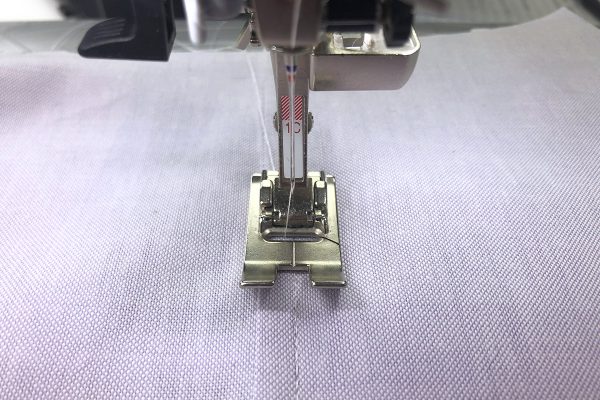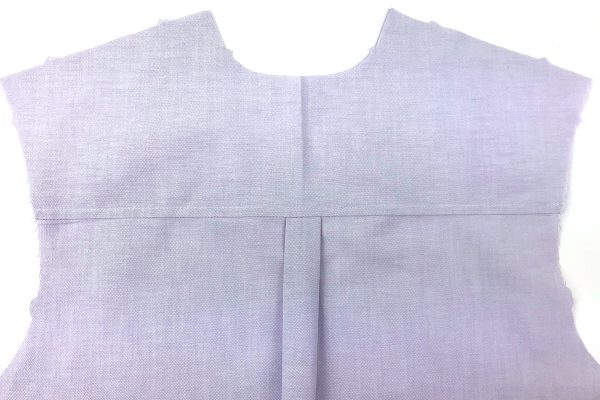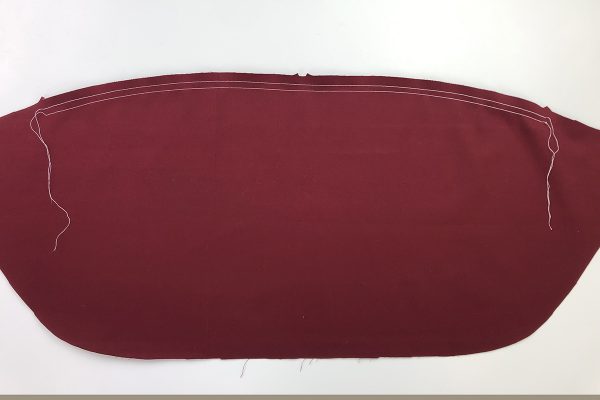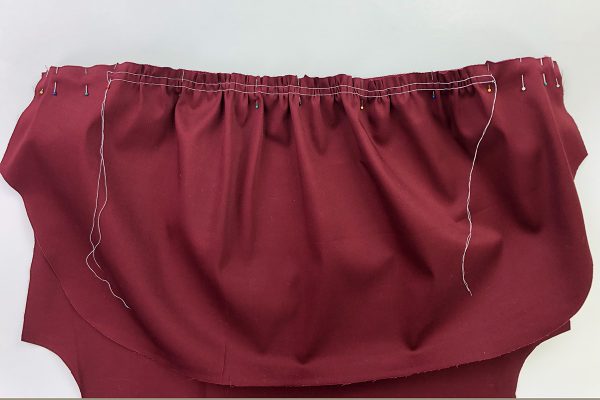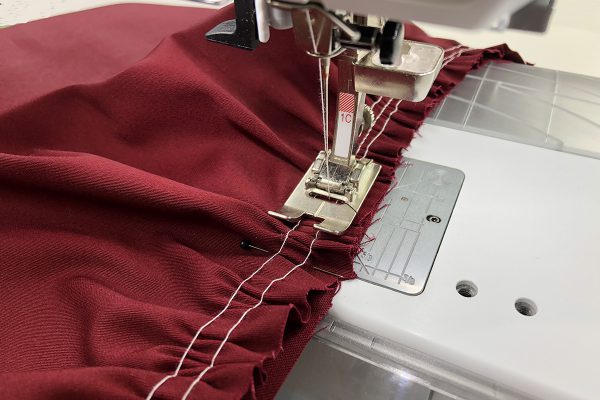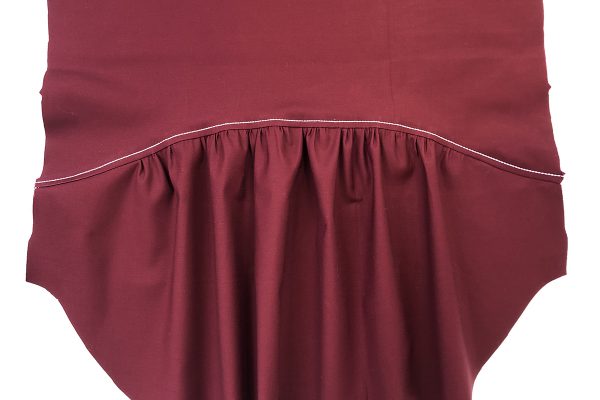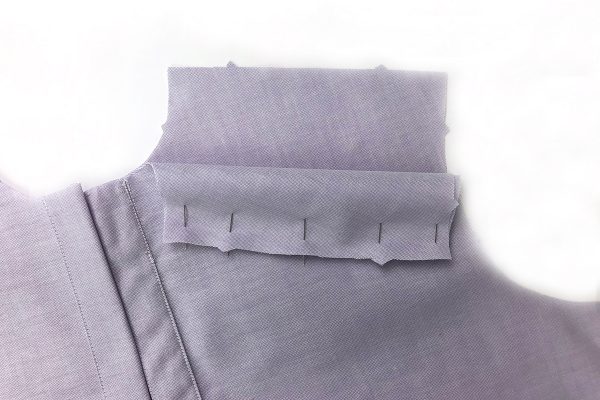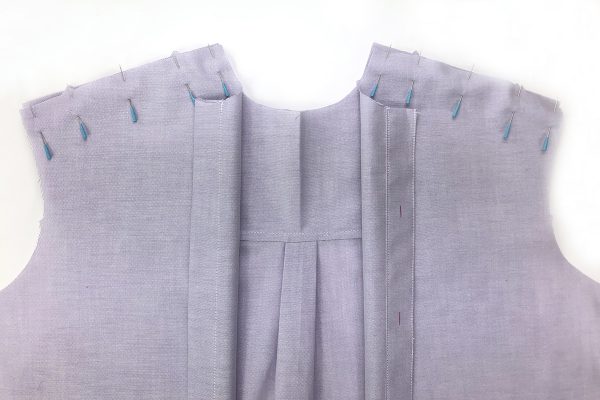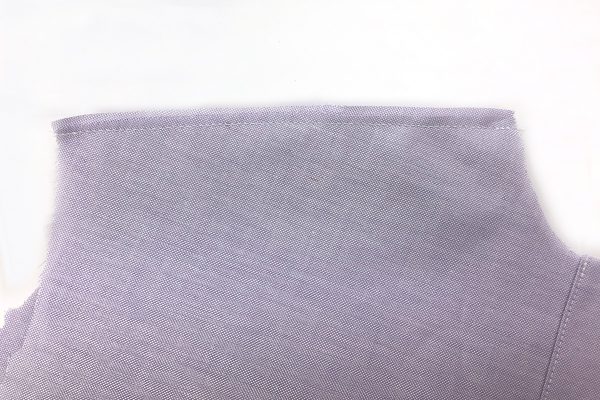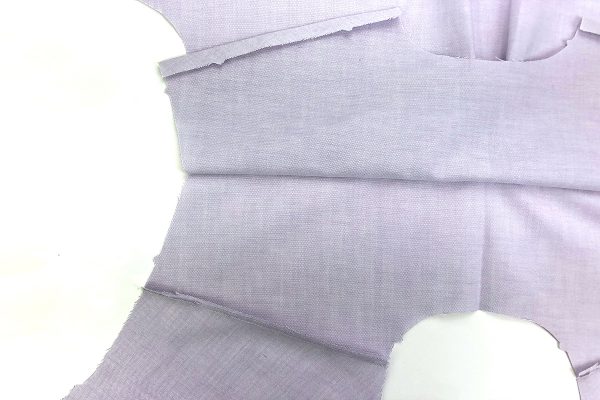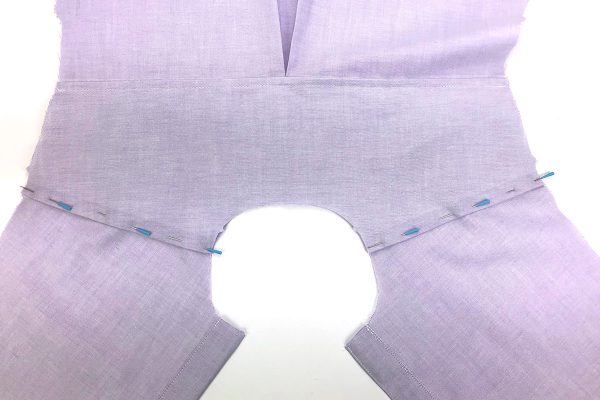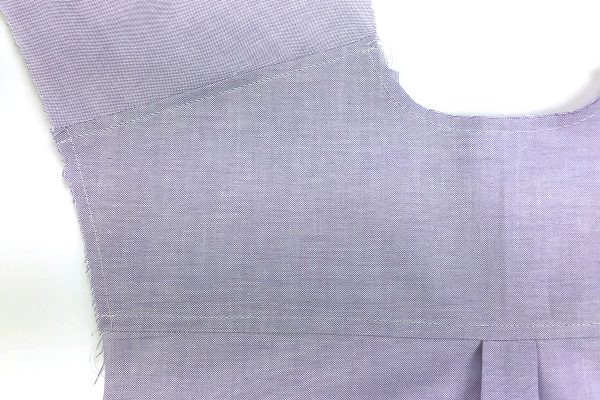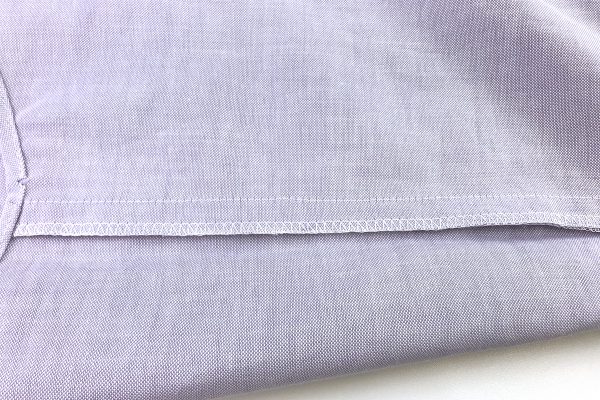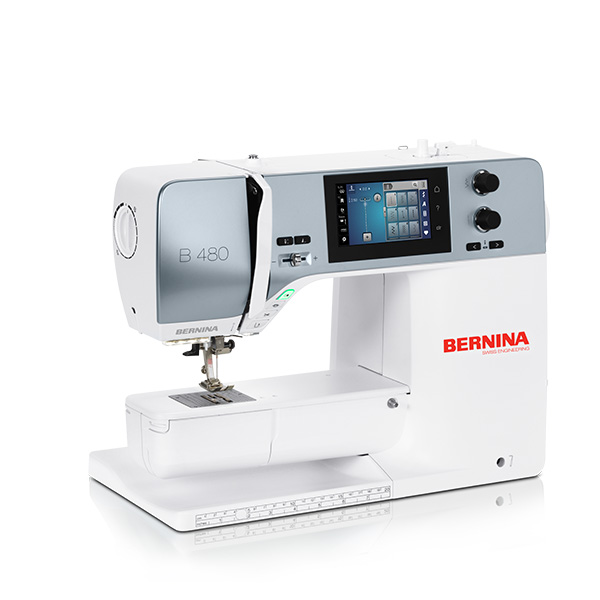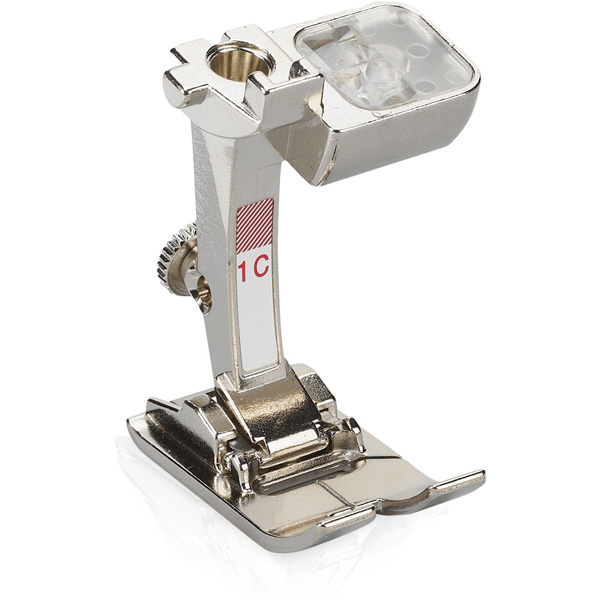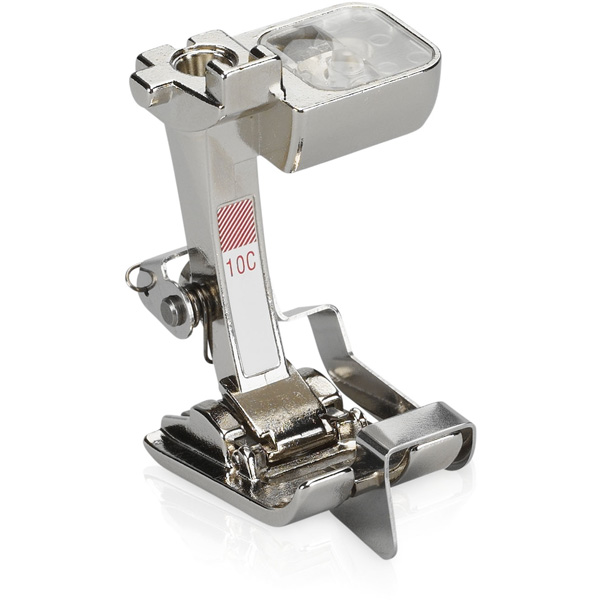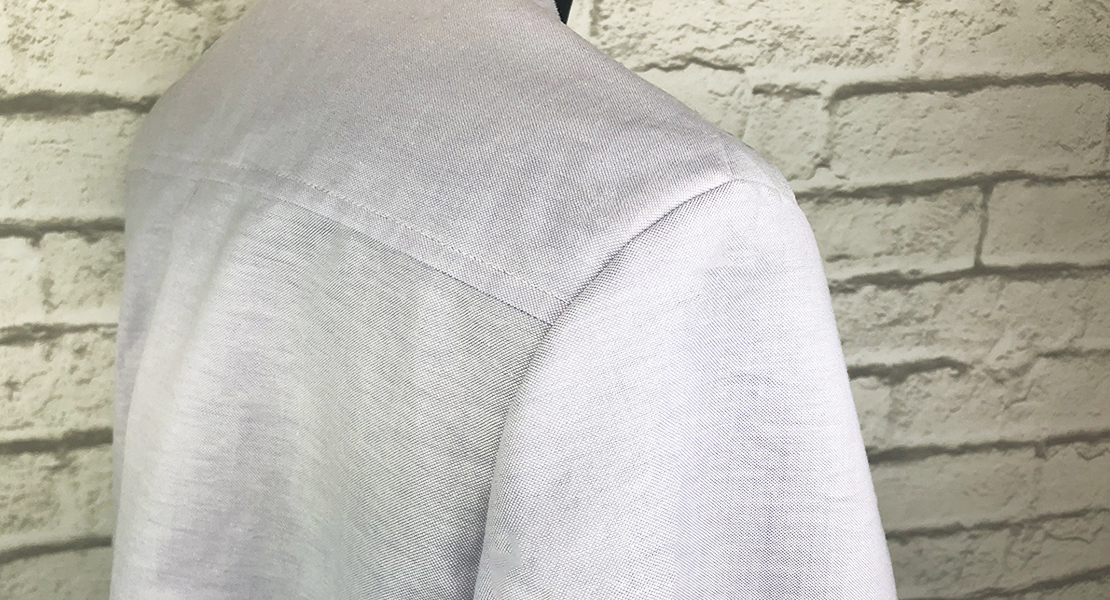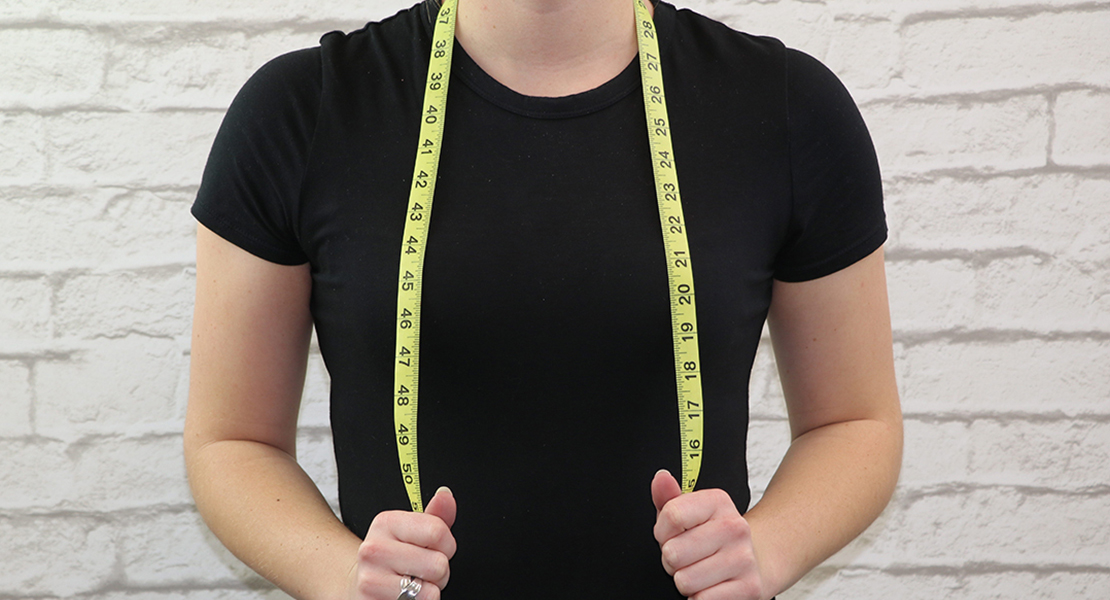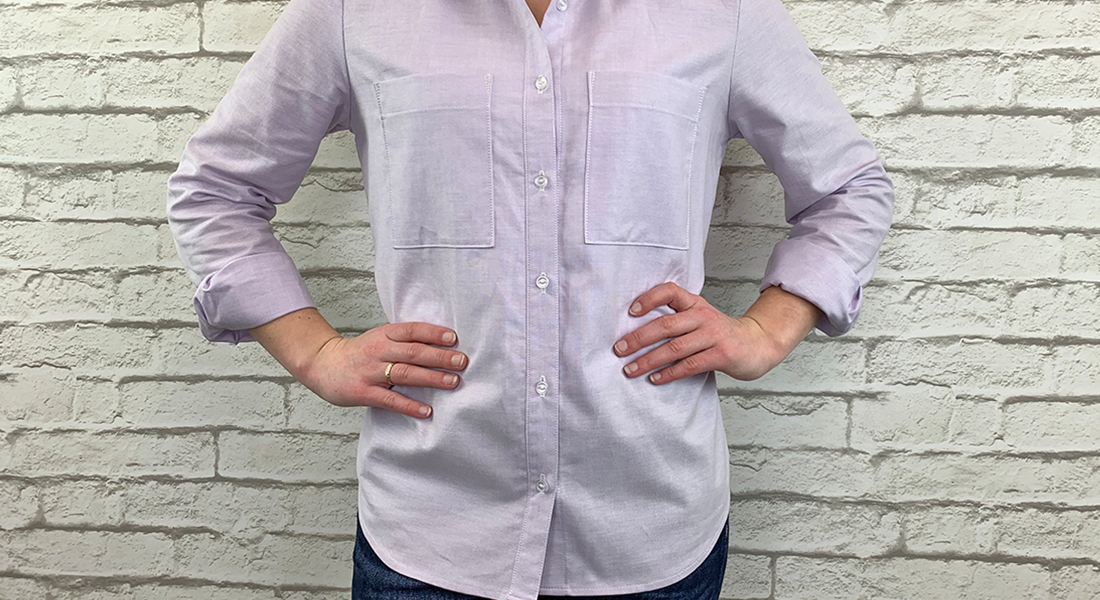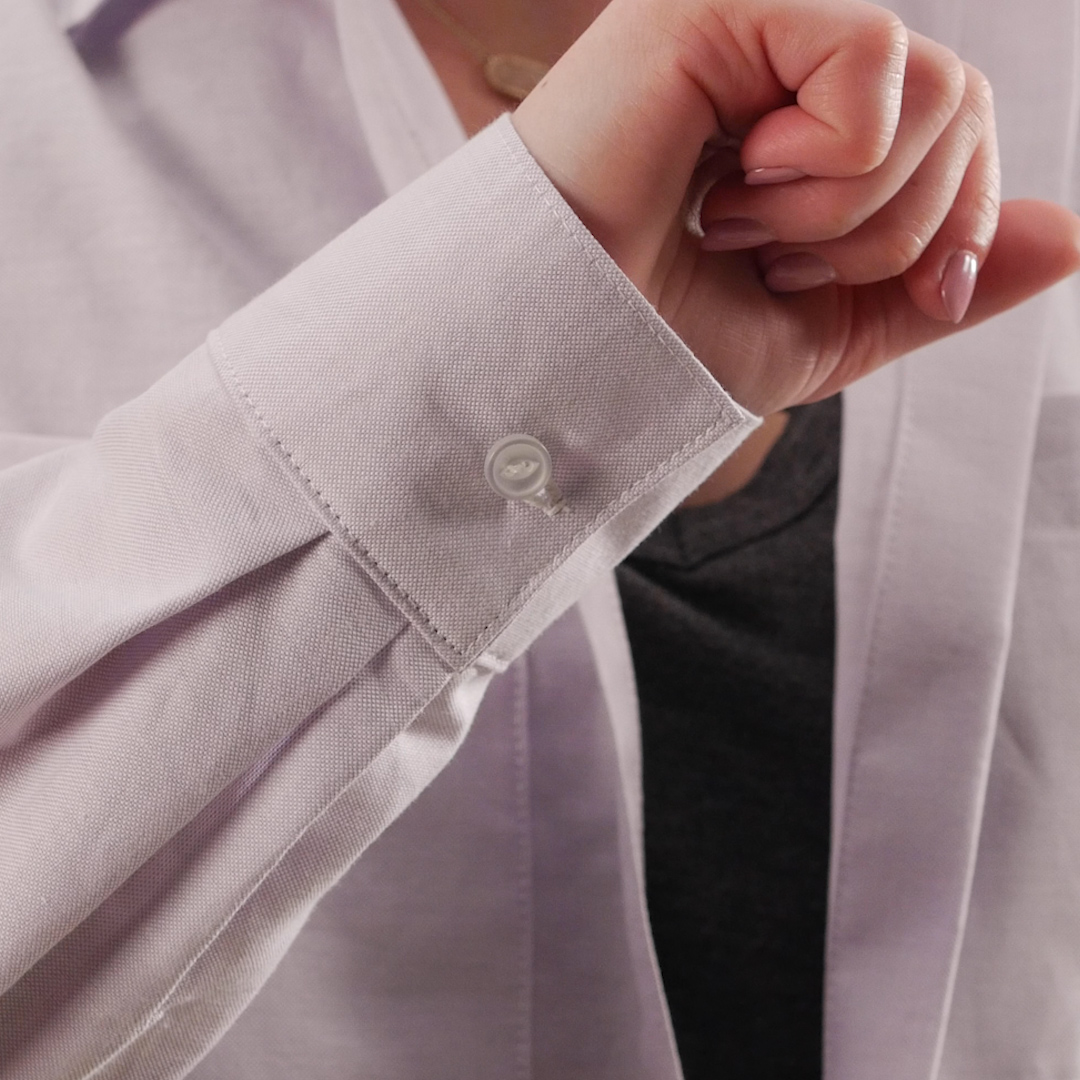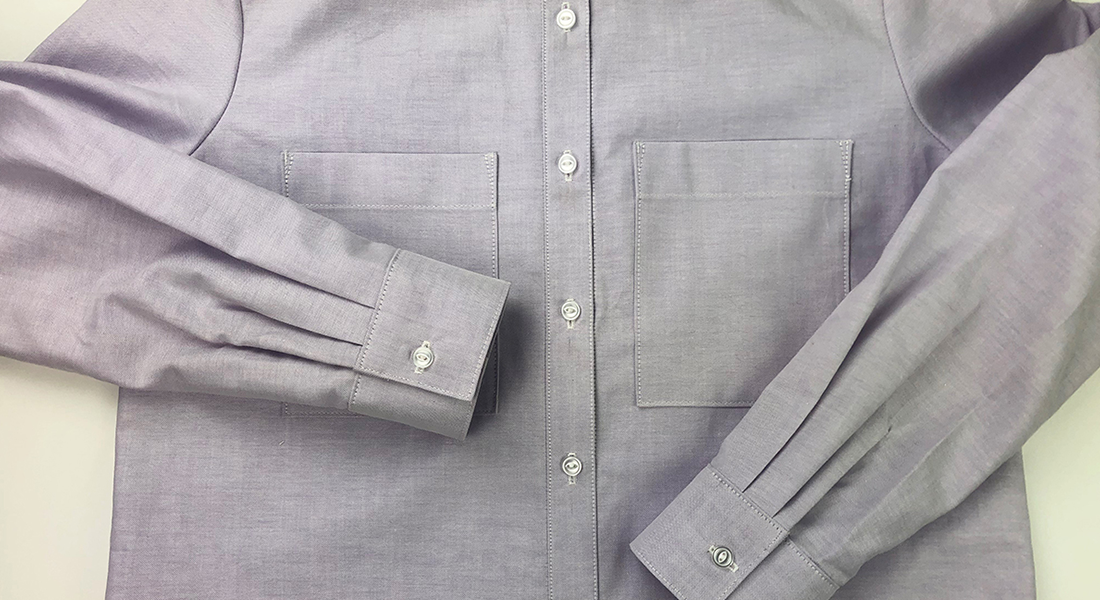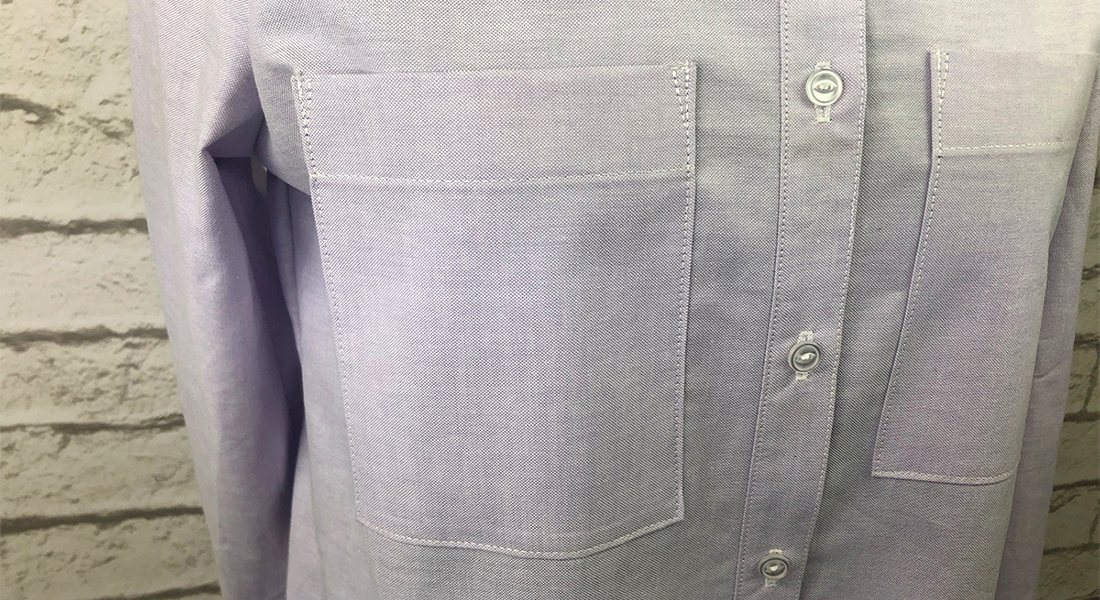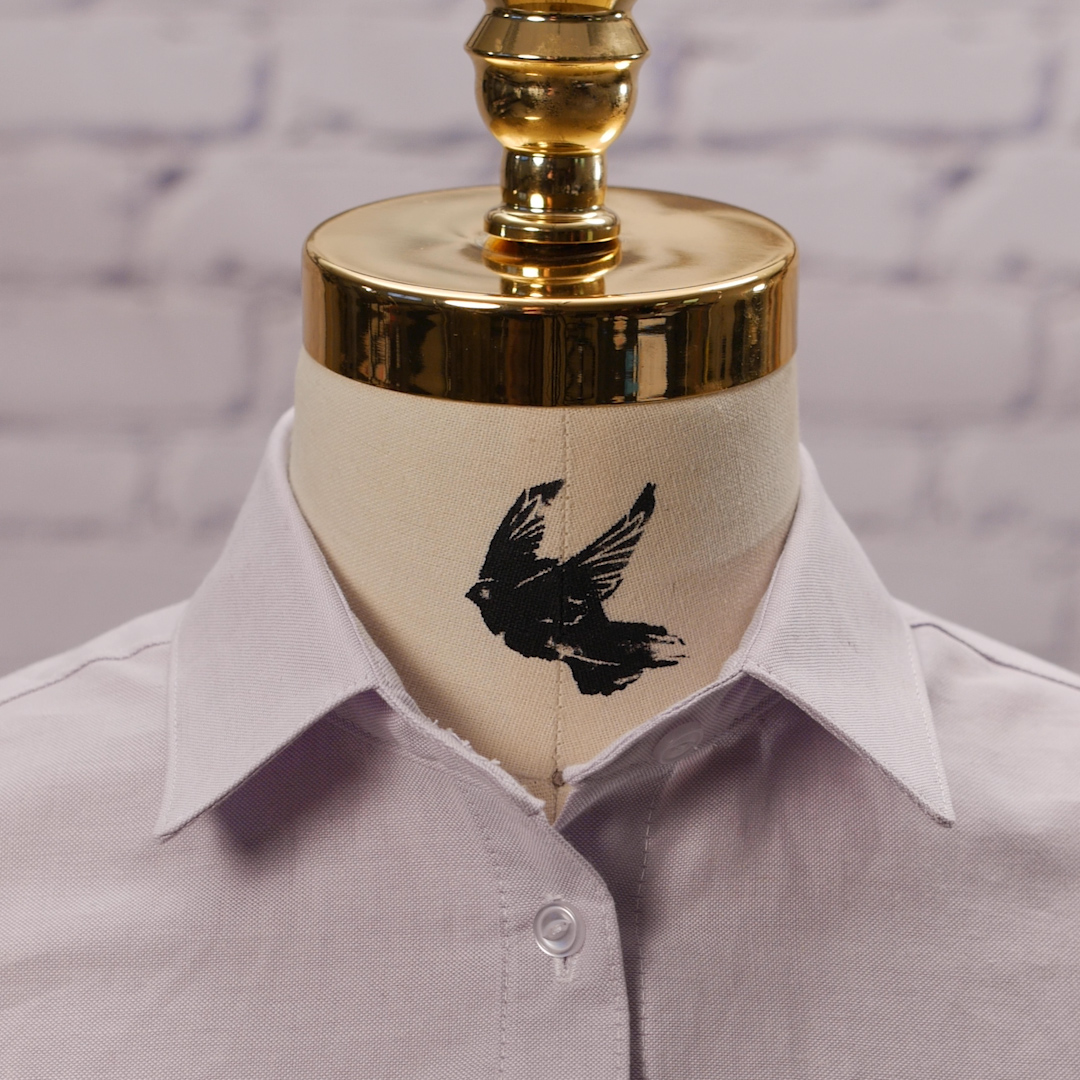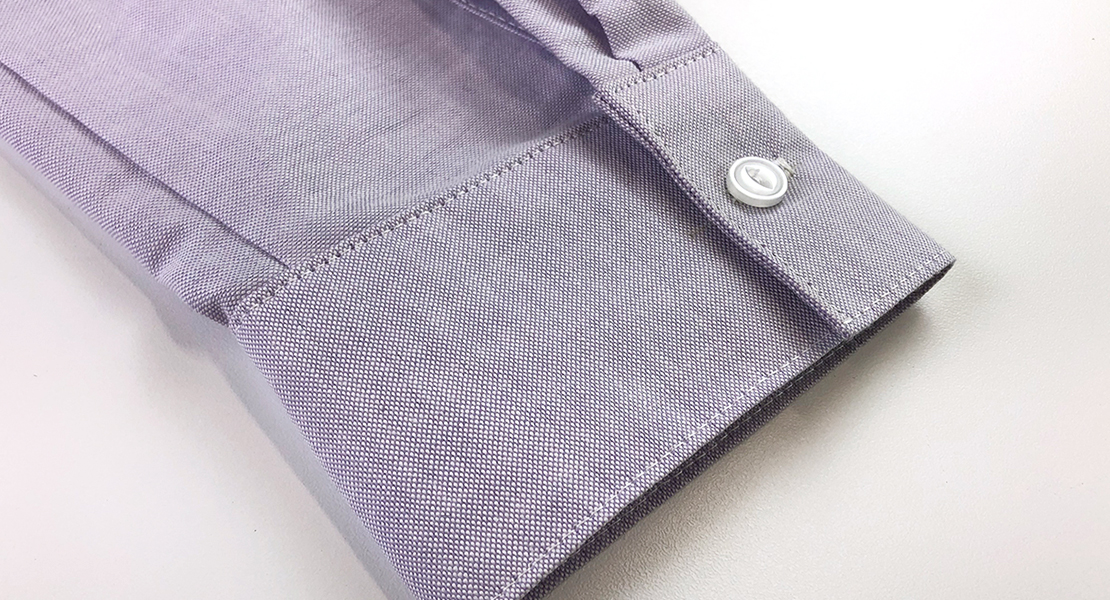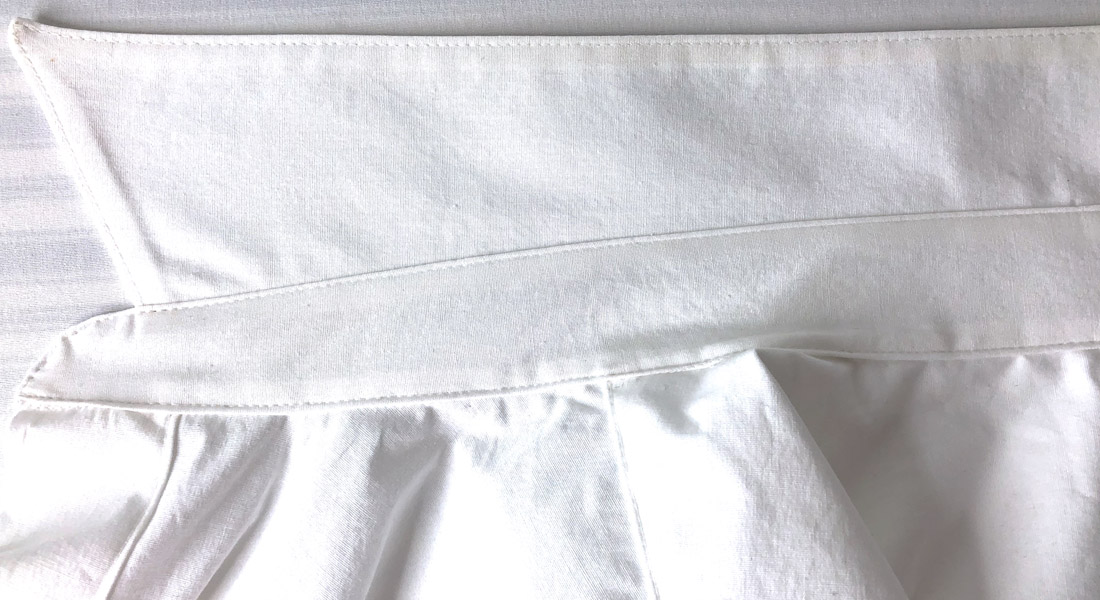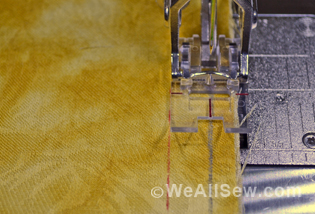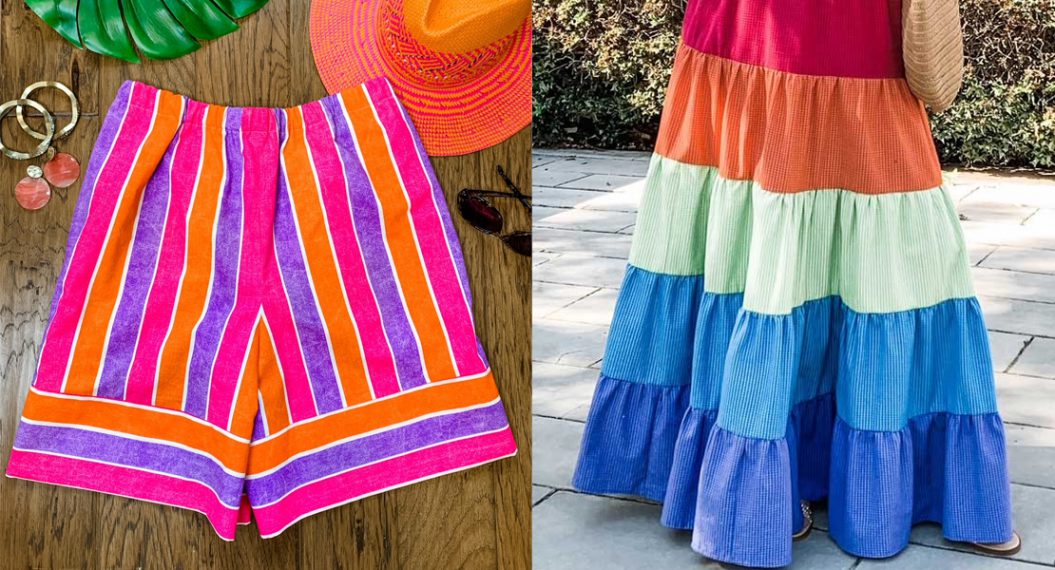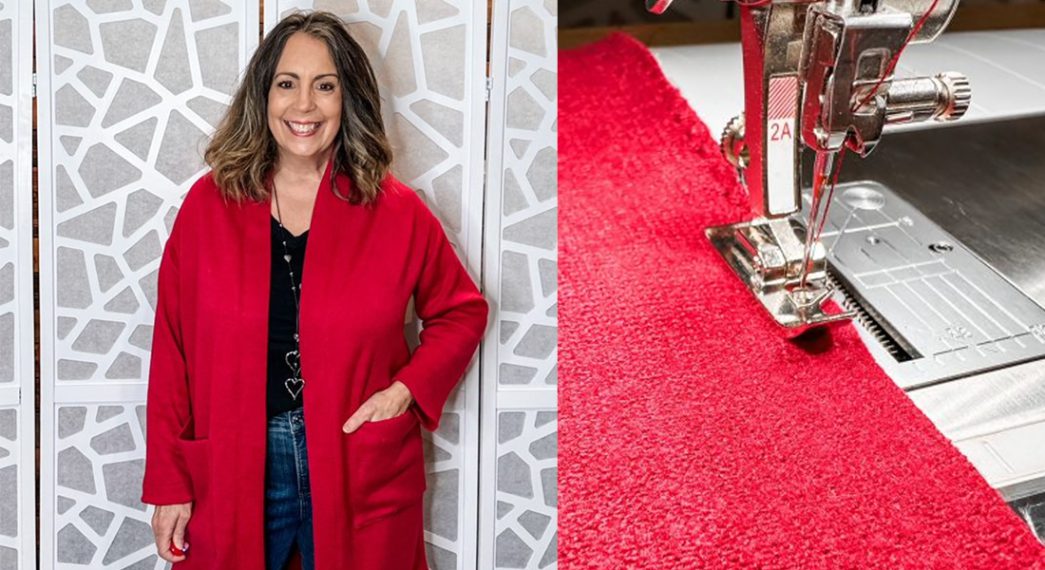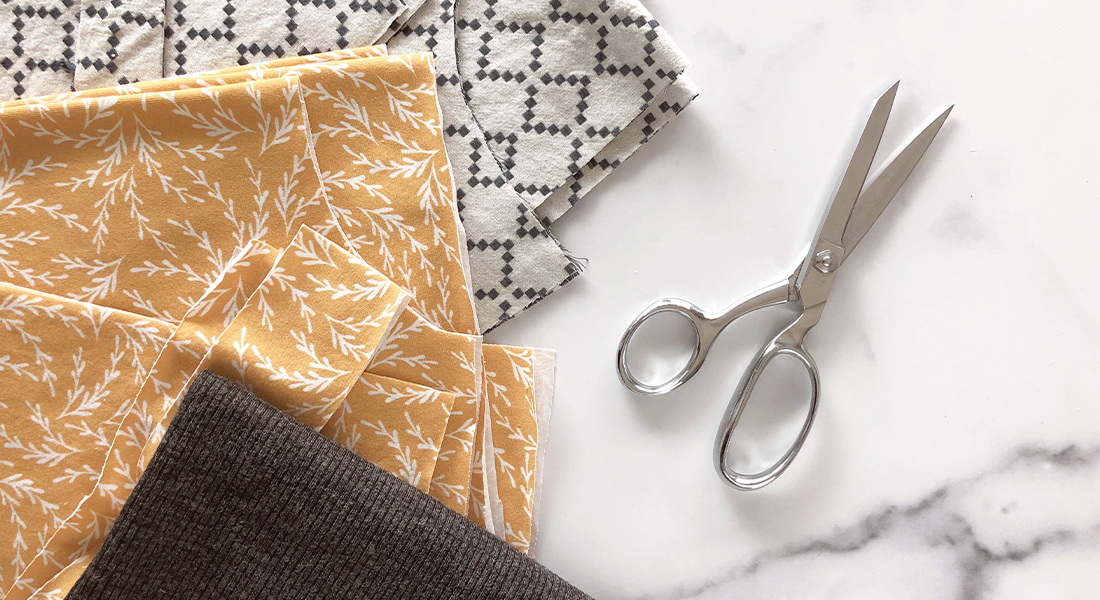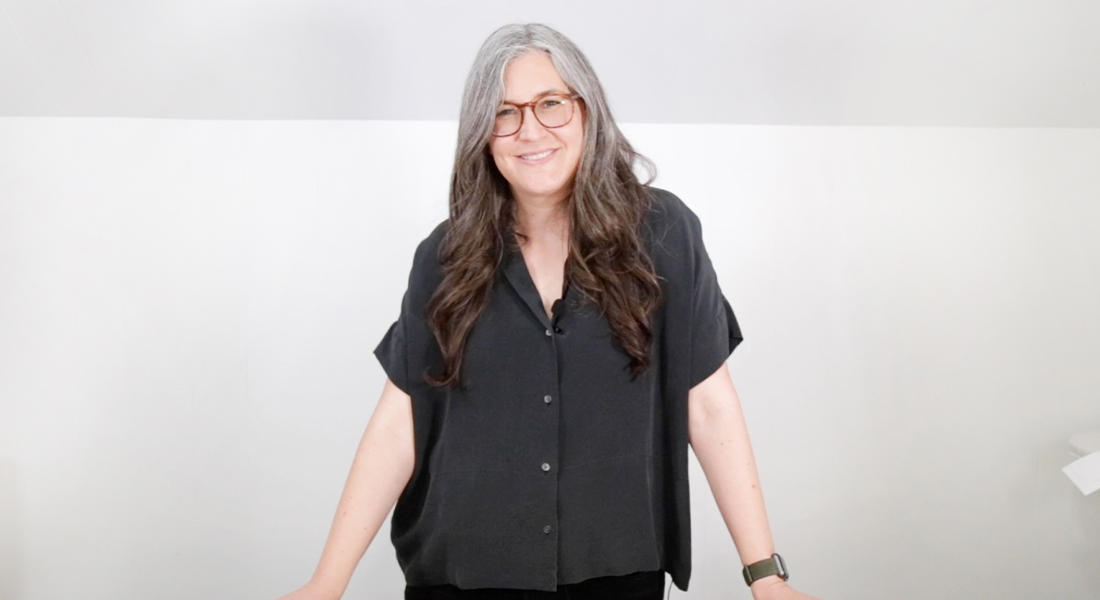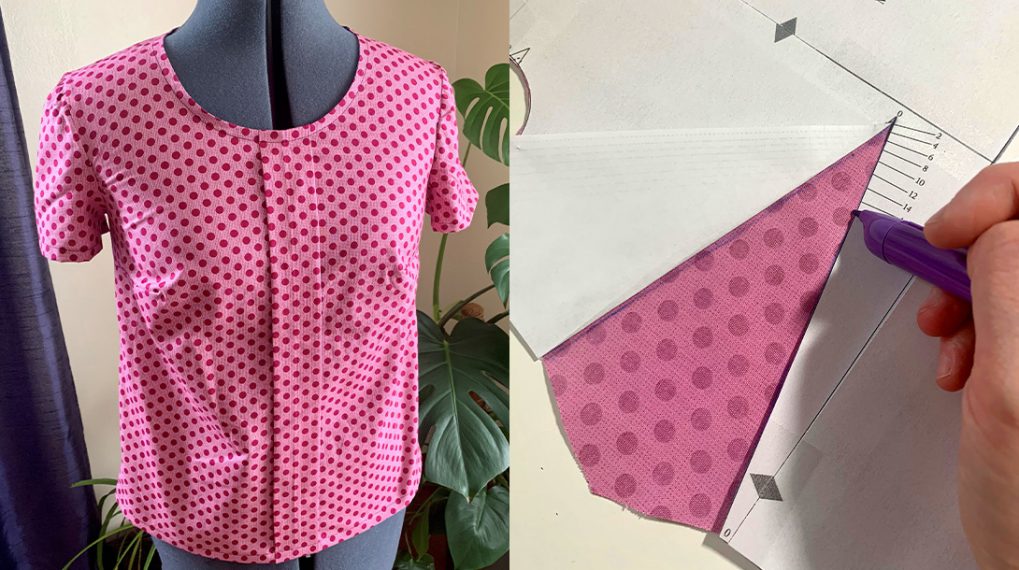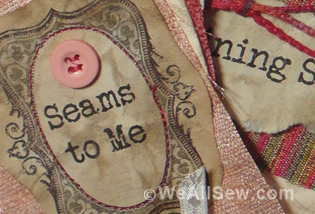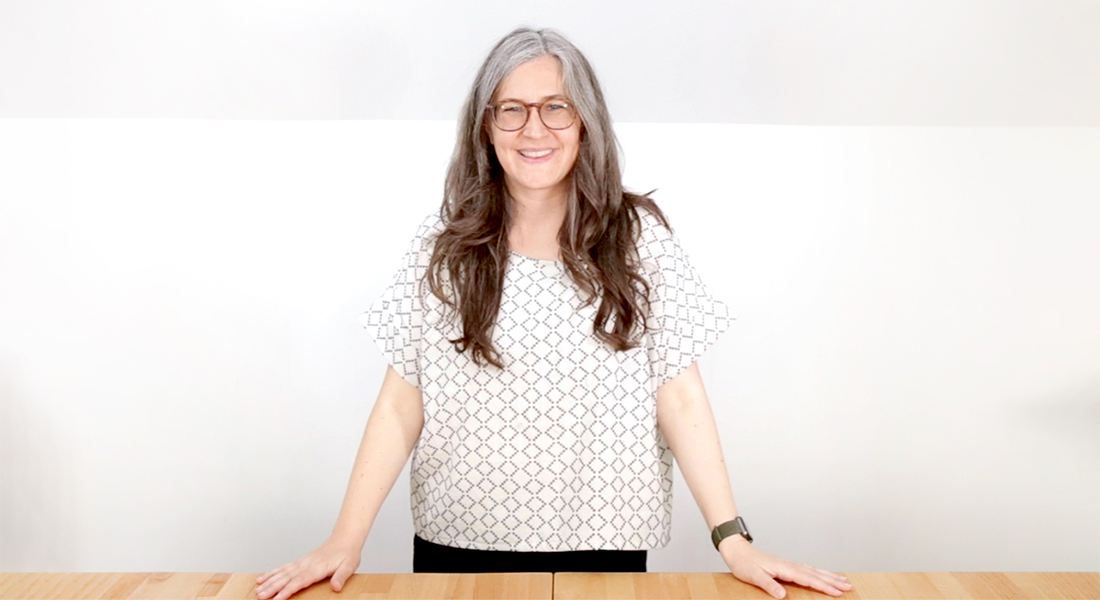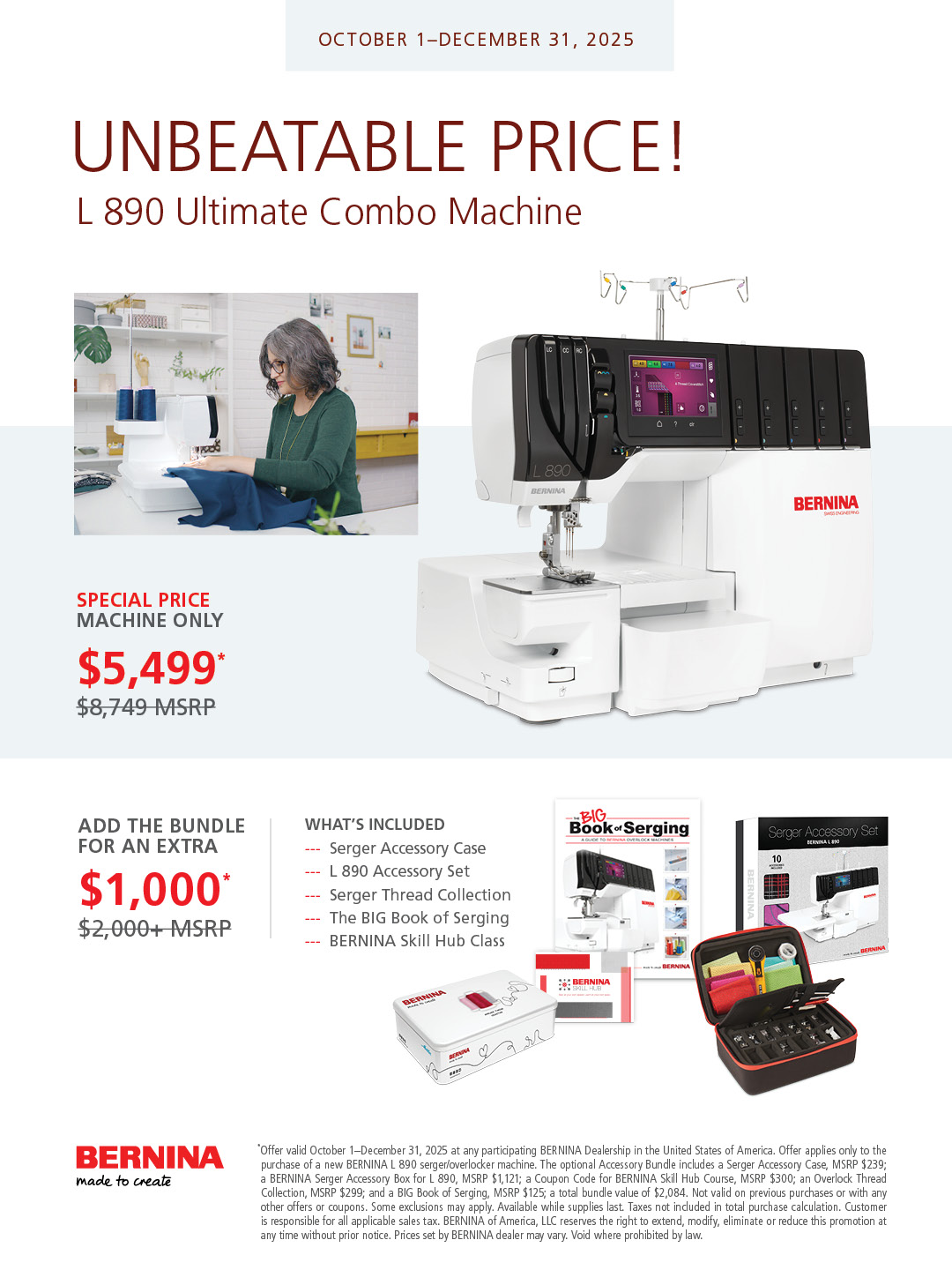Garment Sew Along Part 4: Fronts, Yokes and Seams
After picking out the fabric, cutting out the pattern, and learning about the different types of stitches in garment sewing in our previous posts, we are finally ready to begin sewing! If you have been following along with the other posts, you can see just how much goes into creating garments before even sitting down at a sewing machine. However, each component completed before construction will lead to beautiful final results after.
This post will cover the basics for creating the button bands on both front pieces, and constructing the back of the garment. The final step in the process will be sewing the fronts and back together at the shoulder seams. I will demonstrate how the pattern calls to finish off the raw edges of the seams sewn, and talk about simple fitting tricks to use on these sections of the garment.
There are a few important things to note before sewing anything. First, in this pattern all seam allowances are ½”, unless otherwise stated. Second, always match the notches. The key to making sure things align correctly throughout construction is to align the notches that are cut every single time the option is available.
Supplies to Sew Fronts, Yokes and Seams
- BERNINA 480
- Reverse-Pattern Foot #1C
- Edgestitch Foot #10C
- Schmetz Universal Needles Size 80/12
- Aurifil thread
- Pattern pieces
- 1, 2, 3, 4, 5, 6, & 10 (for View A)
- 1, 2, 3, 4, 5, 7, 8 & 10 (for View B)
- Pins
- Wonder Clips
- Scissors or shears
- Seam gauge
- FriXion pen
- Iron
- Wool pressing mat
Left and Right Fronts Construction
Let’s first discuss how to create the finished button bands on the left and right fronts. Start by fusing the fusible interfacing to the wrong side of the left front (fuse piece 5 to piece 1) and the wrong side of the right front button band (fuse piece 4 to piece 3).
Note that with the left front, the interfacing should sit 1” away from the raw edge, or between the two notches. Draw lines parallel to the raw edge to make sure the alignment is even all the way down the band, or use a seam gauge to measure out the 1”.
Use the instructions to fold the edge under for the left band once the interfacing is ironed on.
Align the notches for the right front and button band, pin, and stitch with a ½” seam allowance.
To grade the seam allowance for the right front button band, trim the entire allowance in half, then trim the button band edge down just shy of 1/8”. This will reduce the bulkiness of the band.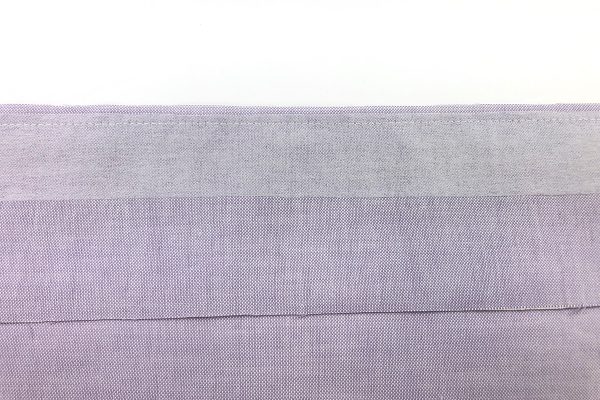
With the button bands, I prefer to do most my edgestitching on the right side because that is the side that will show. My exception is the left front band because this will be hidden underneath the right side when the shirt is buttoned, but I still use the same settings listed. After folding over and ironing the raw edges so they are encased, attach Edgestitch Foot #10C, adjust the needle position to be 2 or 3 spots off from center (depending on which direction you are more comfortable sewing, and increase the stitch length slightly. If these bands are pressed well enough, they should not move that much. Since I am sewing on the right side, I use Wonder Clips to hold the folds in place.
Only after I am done stitching the front pieces do I go back and mark the pocket alignment points, as well as where the buttons and buttonholes will be stitched. Just remember that if using a FriXion pen, the marks erase with heat.
I always try and sew all my seams in the same direction, which is down towards the hem. In most cases, however, you will just want to sew in a way that puts the least amount of fabric to the right of the needle. It is much easier to maneuver the fabric in the space to the left. With this in mind when edgestitching, the needle may need to be repositioned to either the left or right of center. Revert the stitch settings after completing the edgestitching. I am skipping the attachment of the pockets at this point in the construction. More instructions on that will come in another blog post.
Yoke & Back Construction
One piece that I want to call specific attention to is piece 10, which is the yoke (and no, I am not referring to the yolk of an egg). The yoke is an important piece because it allows the ease of movement throughout the back and into the shoulder and sleeve seams. In most cases, the yoke is often the first piece that sewn on. You can have front and/or back yokes. A garment with a front yoke usually has a seam that hits at the bust line. This button up uses two back yokes (to encase all the raw edges), and the seam line falls towards the lower part of the shoulder blade.
My trick for making sure the folds of my pleats are centered is by keeping the fold of back piece 6 pressed and crisp. I do not iron out the fold mark that the piece was cut on. With this visible line to match to, it is easier to get even pleats. I fold the entire back piece to make sure I am bringing enough fabric over to complete the pleat. Pin so that the heads of the pins are close to the raw edge.
On the wrong side the folds will meet at the center.
On the front side, the pleats will face outward.
Increase the stitch length to 5.0 mm to baste the pleats in place. I find it easier to stitch 3/8” from the cut edge, which is 1/8” shy of where the actual seam half inch seam allowance will be, and I put my pins back in the pleats after stitching to hold them securely until the yokes are attached with a 1/2” seam allowance. Leave the thread tails long for easy removal later. Decrease the stitch length after the basting is completed.
Just like the back piece, I keep the original fold crease mark in the middle of both cut outs of the yoke for alignment purposes. The pattern says to baste one yoke on first, but I find it easiest to pin both the yokes together with the back sandwiched between and stitch through all the layers at once. Even though the back piece is in the middle of the sandwich, the two yokes should be facing right sides together. Notice that the pins holding the pleats in place will be easy to remove while sewing.
The yoke seam allowance definitely needs to be graded because of the thickness. Trim the entire allowance in half using shears, then trim both of the front and back yoke pieces in half a second time. A good press afterwards is necessary for getting an even topstitch.
The topstitching of the yoke seam can be done with either foot #1C or #10C. Traditionally, topstitching is ¼” away from the seam, but you can adjust that distance based on your preferences. I always increase my stitch length slightly. If you are using Reverse-Pattern Foot #1C, the seam should glide under the middle of the foot’s left toe for a ¼” topstitch.
If using Edgestitch Foot #10C, place metal guide in the groove of the seam, but adjust the needle position to the right the distance that you would like for the stitch to be. Use your nail or a stiletto to feel the seam to make sure that both yokes are aligned while stitching. Stitch on the right side of the garment (the side the pleat folds are a little over an inch facing away from each other). You can pin the yokes together at the shoulders, or hold them together using Wonder Clips.
Alternatives For The Back
If you decided to use View B for this button up, grab back piece 8. Make sure Reverse Pattern Foot #1/1C/1D is attached and the stitch length is increased to 5.0 mm. The needle should be in the center position. To gather the shirt to fit to back piece 7, two rows of gathering stitches need to be stitched into this piece. On the right side, stitch two lines on both sides of the seam allowance, one at 3/8” and one at 5/8”; leave the thread tails long.
Start pulling the threads on one side. My trick is to hold onto the top two threads with one hand and push the fabric in the opposite direction with other hand. Gathering is different than easing, because with gathering, there can be tucks. There should not be tucks or folds when an ease stitch is used. There will be a significant amount of gathering in order for the notches to match up on this pattern. With the right sides of pieces 7 and 8 together, pin the notches first, and pull the thread tails more if necessary to fit piece 8 to the size of 7.
Revert the stitch length back to the default 2.5 mm. It is easiest for me to stitch with the gathered side on the top so I can ensure that my gathers are evenly spaced. Stitch with a 1/2” seam allowance, using the two rows of gathering stitches as guides.
Once stitching is complete, remove the basting stitches and press the seam allowance upwards and away from the sleeve. Add topstitching 1/4” away from the new seam for a decorative accent. This will also keep the seam allowance in place.
If you did not want to put a center pleat in the back of this shirt, consider adding darts instead. The pleats add the fullness, but adding two darts could help with the fit of the shirt. These should be marked and sewn before the yokes are attached. You would most likely want to press those pleats outwards to give more ease to the shoulders.
Shoulder Seams
One of the perks of having two yokes (front and back yoke pieces) is that both the yoke seam allowance and the shoulder seam allowances are enclosed. All of the raw edges are hidden on the upper part of this garment. The next step in the construction of this top is to sew the left and right fronts to the back at the shoulders.
The front pieces should only be pinned to the inside yoke. (Remember that the inside yoke is on the same side where the pleat folds touch each other.) You will notice that the front pieces are slightly bigger than the yokes at this point. Pin the notches together first, then evenly space the rest of the fabric.
Ease the excess in when stitching with a ½” seam allowance.
Like the rest of the seams, both of these will need to be graded! After initially trimming the seam in half, trim the front pieces down again.
To enclose the seams just sewn, first make sure that the seam allowances are pressed towards the yoke. Flip the garment over. Using a seam gauge, iron under the raw edge of the yoke not sewn to ½”.
The key here is to press well and press accurately. That folded edge should just cover the line of stitching just created.
The pattern says to topstitch this on the wrong side. I found that on my top, I wanted to stitch this on the outside of the garment so I could follow the seam. In this case, I had to flip the pins to the top side, while making sure that the folded edge still covered my stitching. I stitched a seam allowance that was a little less than ¼” and used my nail to feel underneath and keep the unsewn yoke even. If you do not want to do this, you can always stitch on the inside of the garment, or even hand sew the folded edge first, then topstitch.
The final step is to baste the two yokes together at the neckline and the armholes. Match the notches and pin in place. I did all of my basting following the 3/8” mark on the stitch plate.
Fitting Tips
It is probably too early to tell if the shirt will be too roomie in the front, but you could baste together the side seams to get an idea. If the bust area seams too big, you could add darts to both of the fronts, but you would want to make sure that they are evenly placed on both sides. This would take in the fabric to create a better fit, and would also take in even more fabric around the armhole. If it is too small, make a note of this and use a smaller seam allowance when it is time to sew the side and sleeve seams.
One of the easiest ways to make adjustments to the back before attaching the yokes is to add darts. On View A, there is already a center back pleat. This adds more volume in the back of the shirt, and creates ease of motion for the upper back. As I mentioned before, you could add darts for even more fit around the shoulder blades. I would not mark darts greater than 3” in length. If you have basted the side seams and are finding that the shirt is fitting improperly under the arm, darts again could be added. They can be marked out on the yokes in the curve of the armhole, just inches above the side seam on the back piece.
Adjusting the shoulder seams is as easy as using a greater or lesser seam allowance.
Seam Finishing
In the last post, I talked about the different kinds of stitches involved in the construction of this button up. With most of the steps above enclosing all of those raw ends, any seam finishing with the 3-thread overlock stitch will not occur until our next post. Seams allowances that will be finished this way include the side seams and sleeve seams.
Until Next Time
The posts to come will involve lots of pinning, sewing, and pressing. The end result will be a finished button up! The sleeves and side seams of this top are the next steps. Plackets are sewn to the lower part of the sleeve, the pleats are basted, the upper part of the sleeve is set in first, and then the side seams and sleeve seams are sewn all at once. All of this and more will be discussed in the next post. To be prepared, have pieces 9 and 14 ready, as well as the rest of the garment that has already been constructed.
Garment Sew-along
Part 1: Garment Sizing and Fabric Selection
Part 2: Pattern Cutting, Markings and Fitting
